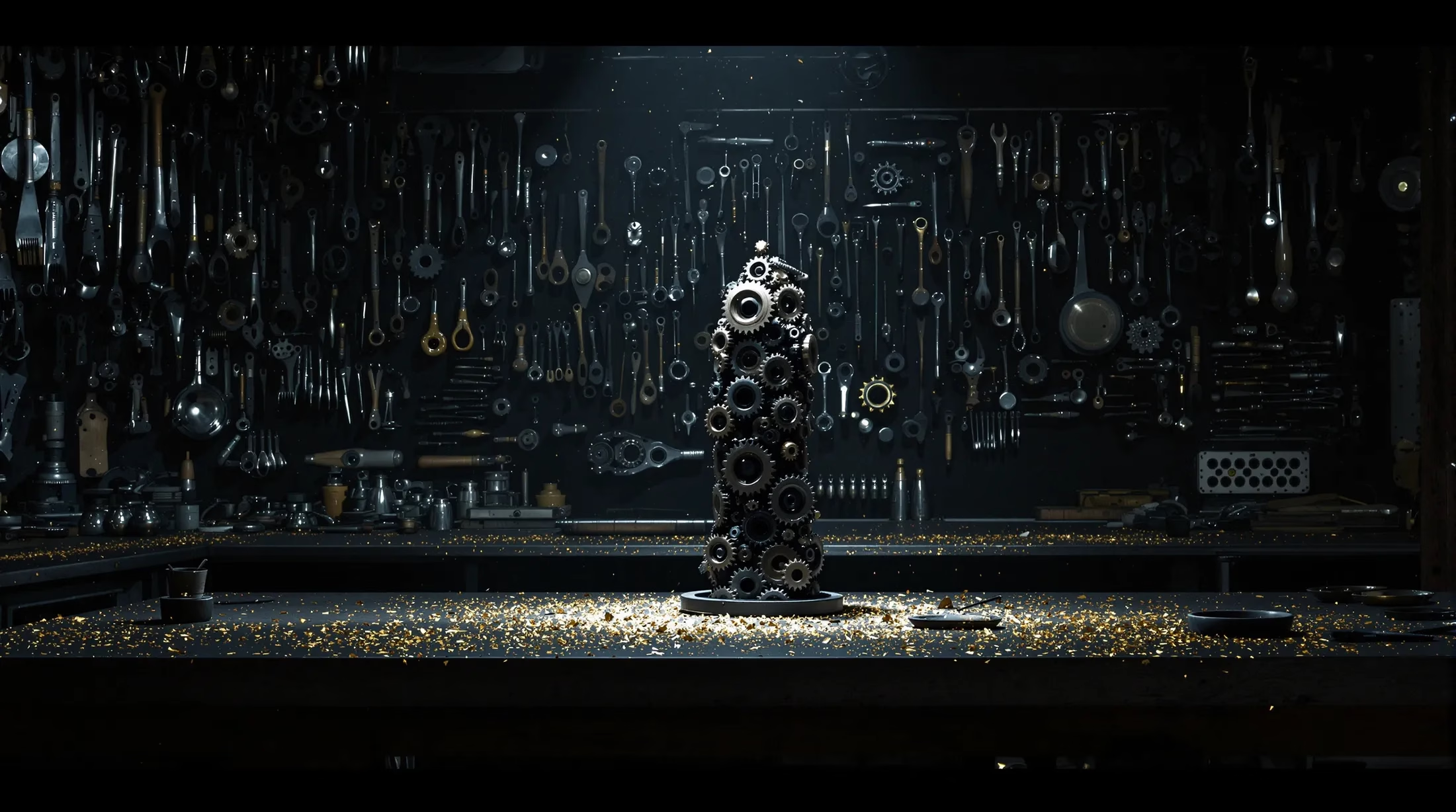Fabricator: Understanding the Role and Skills Required
Discover the intricate world of fabrication, where skilled professionals transform raw materials into precision-engineered products. Whether you’re considering a career in fabrication or seeking to understand this vital industrial role, this comprehensive guide explores the essential aspects of becoming a successful fabricator.
What is a Fabricator?
A fabricator is a skilled professional who transforms raw materials into finished products or components through precise manufacturing processes. These craftspeople work with technical drawings and blueprints to create exact specifications, utilizing their expertise in cutting, shaping, joining, and assembling materials. While metalworking remains a primary focus, modern fabricators also work with plastics, wood, and composite materials.
Defining the Fabricator Role
The core responsibilities of a fabricator involve producing components that meet exact specifications and quality standards. Their daily activities include:
- Interpreting technical specifications and blueprints
- Selecting and preparing appropriate materials
- Operating specialized machinery and tools
- Performing precise measurements and cuts
- Joining materials through various techniques
- Quality checking finished components
Types of Fabricators
| Specialization | Materials | Key Techniques |
|---|---|---|
| Metal Fabricators | Steel, aluminum, copper, brass | Cutting, bending, welding, machining |
| Plastic Fabricators | Thermoplastics, thermosetting materials | Vacuum forming, injection molding |
| Wood Fabricators | Various wood types | Carpentry, joining, finishing |
| Composite Fabricators | Fiberglass, carbon fiber | Layup, molding, bonding |
| Glass Fabricators | Various glass types | Blowing, fusing, laminating |
Essential Skills for a Fabricator
Success in fabrication requires a combination of technical expertise and practical craftsmanship. The foundation typically includes formal education, vocational training, or apprenticeships, coupled with extensive hands-on experience.
Technical Skills Required
- Proficiency in operating fabrication machinery (shears, press brakes, CNC equipment)
- Mastery of welding techniques (MIG, TIG, stick welding)
- Expertise in measuring and layout techniques
- Understanding of material properties and behavior
- Blueprint reading and interpretation
- Computer skills for CNC programming and design software
Soft Skills for Success
- Problem-solving capabilities for unique challenges
- Time management for multiple project coordination
- Clear communication with team members and stakeholders
- Attention to detail in all aspects of work
- Commitment to continuous learning
- Physical stamina and safety consciousness
Tools and Techniques in Fabrication
The fabrication process integrates specialized tools and equipment that enable the transformation of raw materials into precise components and finished products. Modern fabrication workshops combine traditional hand tools with sophisticated computer-controlled systems, creating an environment where conventional craftsmanship meets cutting-edge technology. This integration allows fabricators to handle projects of varying complexity with exceptional accuracy and efficiency.
The field encompasses various techniques developed through decades of industrial innovation. These methodologies require extensive hands-on experience, as different materials respond uniquely to fabrication processes. Expert fabricators develop an intuitive understanding of approaching each project, selecting optimal combinations of tools and techniques to achieve desired outcomes.
Common Tools Used by Fabricators
- Cutting Equipment – shears, plasma cutters, laser cutters, and band saws
- Measuring Devices – calipers, micrometers, squares, and digital measuring tools
- Forming Equipment – press brakes, rollers, and tube benders
- Machining Tools – lathes and milling machines
- Welding Systems – MIG, TIG, and stick welders
- CNC Machinery – computer-controlled equipment for precise operations
- Finishing Tools – grinders, sanders, and polishers
Popular Fabrication Techniques
| Technique Category | Methods | Applications |
|---|---|---|
| Cutting | Mechanical shearing, laser cutting, plasma cutting, waterjet cutting | Material separation and pattern creation |
| Forming | Bending, rolling, stamping, drawing | Three-dimensional shape creation |
| Joining | MIG welding, TIG welding, riveting, bolting | Component assembly and connection |
| Digital Fabrication | CAD modeling, CNC machining | Precision manufacturing and design optimization |
Training and Qualifications for Fabricators
Success in fabrication requires a blend of formal education and practical training. Most employers seek candidates with a high school diploma or equivalent, particularly those with strong foundations in mathematics, blueprint reading, and technical drawing. Professional development typically involves specialized training through vocational schools, community colleges, or technical institutes, with programs ranging from several months to two years.
Educational Requirements
- High school diploma with focus on technical subjects
- Vocational training in metal fabrication or welding technology
- Associate degrees in manufacturing engineering technology
- Coursework in blueprint reading and technical mathematics
- Training in computer-aided design (CAD)
- Understanding of metallurgy and materials science
- Continuous education to stay current with evolving technologies
Certifications and Apprenticeships
Professional certifications serve as valuable credentials for fabricators looking to validate their skills and enhance their employability. Organizations like the American Welding Society (AWS) offer certifications such as the Certified Welder and Certified Fabricator designations that verify proficiency in specific processes and techniques. Similarly, the Fabricators & Manufacturers Association (FMA) provides certifications that demonstrate expertise in metal fabrication.
- Written examinations testing theoretical knowledge
- Hands-on performance tests validating practical skills
- Industry-standard compliance verification
- Process-specific certifications
- Specialized technique validations
Apprenticeships represent one of the most comprehensive pathways into fabrication careers, combining paid on-the-job training with related technical instruction. These structured programs typically last 3-4 years and allow apprentices to work alongside master fabricators while earning wages. The apprenticeship model covers all aspects of the trade, from basic safety procedures to advanced fabrication techniques, with increasingly complex responsibilities assigned as skills develop.
Career Path and Opportunities for Fabricators
The fabrication industry offers diverse and rewarding career pathways for skilled professionals. Starting as entry-level fabricators, individuals can progress through various positions with increasing responsibility and specialization. With experience and demonstrated expertise, fabricators can expect not only job security but also competitive compensation that reflects their technical abilities and precision craftsmanship.
Advancement Opportunities
- Lead Fabricator/Shop Supervisor – overseeing projects and mentoring team members
- Quality Control Inspector – ensuring product specifications compliance
- Shop Manager/Operations Director – managing overall facility operations
- Business Owner – establishing independent fabrication enterprises
- Design/Estimating Specialist – applying practical knowledge to technical planning
Industries Employing Fabricators
| Industry | Applications |
|---|---|
| Construction | Structural steel, railings, stairs, architectural metalwork |
| Manufacturing | Machinery parts, equipment components, consumer products |
| Transportation | Automotive, aerospace, railway, shipbuilding components |
| Energy | Oil rigs, pipelines, renewable energy infrastructure |
| Defense | Military vehicles, vessels, specialized equipment |
| Custom Fabrication | One-off items, artistic pieces, specialized manufacturing |



